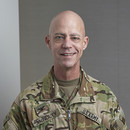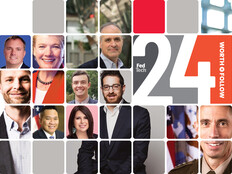The position of Army paymaster general was created just two months after the American Revolution began, before the United States even existed — a sign of how important it is to make sure the military is paid. Col. Darby McNulty is leading a modern-day team of paymasters on a project to streamline an antiquated system covering the Army, the Reserve and the National Guard. The Integrated Personnel and Pay System-Army underwent its first test with the Pennsylvania National Guard in early 2019 and will be tested in Virginia later this year. McNulty explained the project to FedTech.
FEDTECH: Why is IPPS-A needed?
McNULTY: It came out of our experience during the first Gulf War. That was the first time we fought a major conflict using an all-volunteer force. We activated all the people from the Army National Guard and the Reserve, as well as the Army. But we have so many disparate systems, and some of them are very old, so when it came to making sure people’s personnel records were updated and their pay was processed properly, it was a mess. That’s when the department took the first crack at a DOD-wide effort to bring payroll into a single solution. It was a noble effort, but you’ve heard the expression about trying to eat an 800-pound elephant. So a decision was made to split the project back out to the individual services.
The Army alone maps out to about 200-plus systems in use today. It’s not very integrated — it’s very fractured. There’s still a lot of paper in the loop, a lot of things are emailed around, and there’s still very much an air gap between human resources and pay. Our finance professionals really deserve better technology.

FEDTECH: What technology did the Army decide was best for upgrading the payroll system?
McNULTY: There was a decision to use Oracle PeopleSoft. I believe that a lot of other big enterprise resource planning implementations across all the domains were asking commercial products to do more than was possible. That drove folks to a significant amount of customization. We believe we’re only on the order of 10 percent, 15 percent customization. We have not touched the underlying source code at all. In fact, the biggest chunk of our customization is tables; you go into these ERP products and put basic data elements in tables — rank, awards, order types, duty status — and you’ve done nothing invasive. That means that we can upgrade the software products continuously. Retesting the whole product because you’ve touched the source code is an animal.
The other thing is that we no longer are buying our infrastructure. People talk about going to the cloud, and you have a hard time doing that if you’re customized. We’ve absolutely minimized customization, and we lease our hardware. Because it’s a service, it’s incumbent upon them to make sure that our infrastructure is upgraded.
MORE FROM FEDTECH: See how DOD intends to revamp its software acquisition and creation.
FEDTECH: How much consolidation will result when the IPPS-A project is complete?
McNULTY: At a very top level, there are roughly 160 major business processes in the Army, across all three components, that involve personnel and pay activities. We believe that when we’re done, we’re going to have that down to about 30 or 40 integrated business processes that work for all three components, but that still accommodate the unique needs of those components.
FEDTECH: Give an example of how complicated a simple HR request would be in the existing system. How would I find out how much leave I have left?
McNULTY: Well, you have to log in to one system and then you go into another form and you fill out that form, and you can digitally sign it, and then you email it to someone who signs it and then it gets emailed back to the HR professional. Each time you do that, you have to pull it up, save it to your desktop, open it up, digitally sign it and reattach it to an email. I’ve got this memorized, because as a commander, I do this. Then it goes to the Defense Military Pay Office, and then eventually it either works its way or not to the Defense Finance and Accounting Service, and your leave is decremented. On IPPS-A, you’re going to be able to do that on your phone.
FEDTECH: How will having an optimized payroll system help the Army as an organization?
McNULTY: Gen. James McConville, the vice chief of staff of the Army, talks about this program doing three big things: It’s going to allow us to do talent management; it’s going to allow us to do total force integration across the three components; and it’s going to give the Department of the Army the ability to be audited. We also bought some things to support audit, like GRC — governance, risk management and compliance — software. It’s a huge investment. You can’t just flip the switch on a new ERP. It’s 200 different systems out there, and you have to take down the legacy environment in a way that doesn’t disrupt operations.
MORE FROM FEDTECH: Discover how AI will reshape the federal workforce.
FEDTECH: What are the plans for rolling out IPPS-A?
McNULTY: You’ve got to get the core human resources straight before you try to tackle payroll, because just about all the drivers of pay are HR-related — your rank, your duty location, your years of service, your special badges and awards, where you’re physically located, your state taxes elected.
Our first step is to bring the Army National Guard onto a single HR platform. Then we do the same for the active component and then the Reserve. Once you get the entire Army on a single integrated core human resources platform, then you move on to payroll. You want to make sure that you work out all the kinks, and we’re also making sure we’re doing all the right things in the areas of auditing, cybersecurity and performance.
FEDTECH: Are there any culture-related challenges in this project?
McNULTY: We keep a close eye on demographic metrics, and we’re very human-centric in our design approach. The youngest two generations in the Army, which make up more than 80 percent of the Army, are the millennials and Generation Z. They’ve had these mobile devices in their hands since they were in a car seat.
I’m taking down all the cubes and letting people sit in completely open areas, and I let people wear jeans, so we’re kind of off the charts around here. I’ve gotten a few looks from some officials when they come through here and see a bunch of guys running around in jeans. And I say, “Hey, you tell a young millennial who’s a hotshot developer that they have to wear a coat and tie to sit in a cube to do software development.” It’s a very competitive technical marketplace.











